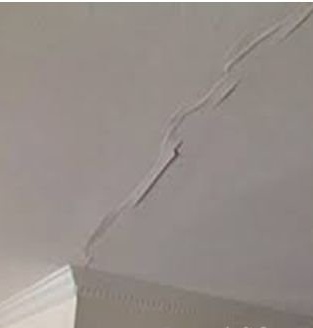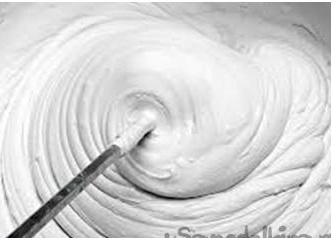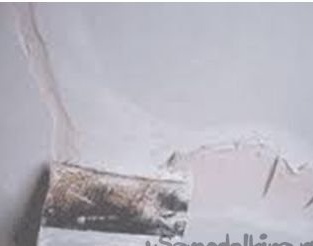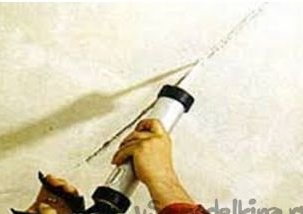
Of course, the landlord wants to get rid of this problem as soon as possible, but does not always know how to do it. Today we will talk about the most common and most effective methods for eliminating cracks, which will be possible not only for professionals, but also for ordinary people.
So, the most frequently used and verified method by our grandfathers to eliminate cracks in the ceiling is to treat the damaged area with gypsum mortar. The composition of such an industrial solution includes shallows and gypsum.

In some cases, a special synthetic putty may become a component of the mixture.
It is more convenient to work with such compounds and pastes because of their elasticity. In addition, they have amazing waterproof properties.
For stronger adhesion of the gypsum composition to the wall, it is necessary to moisten the crack surface with plenty of water, after having previously cleaned the ceiling from the remains of plaster, dirt and dust. To do this, you can use a sponge, brush or spray.

If the crevice or crack formed is too narrow, then it should be slightly expanded, up to about two centimeters, and then sanded with sandpaper, this will give you the opportunity to better fill the gap. If you do not follow these recommendations, then your work will go down the drain, and in the near future you will return to the starting point.
There is another nuance to make putty more durable and ductile. To do this, you need to add a little PVA glue to the manufactured solution, namely in the ratio of one to ten. But with this, one might say, modernization, one more thing should be taken into account, namely that you will have less time for putting putty than when working with a regular mixture. In addition, PVA glue can also be used as a primer, only it must first be diluted with water.
Also today you can buy modern and quite effective synthetic sealants, which have not only a waterproof effect and waterproofing properties, but also excellent adhesion (adhesion).

In addition, the rubber-like structure of such a sealant is resistant to the displacement of load-bearing structures, and has long operational properties (up to 30 years). Such sealants have some similarities with mounting foams, but unlike them, the sealant, when applied to the surface, retains its original volume.
